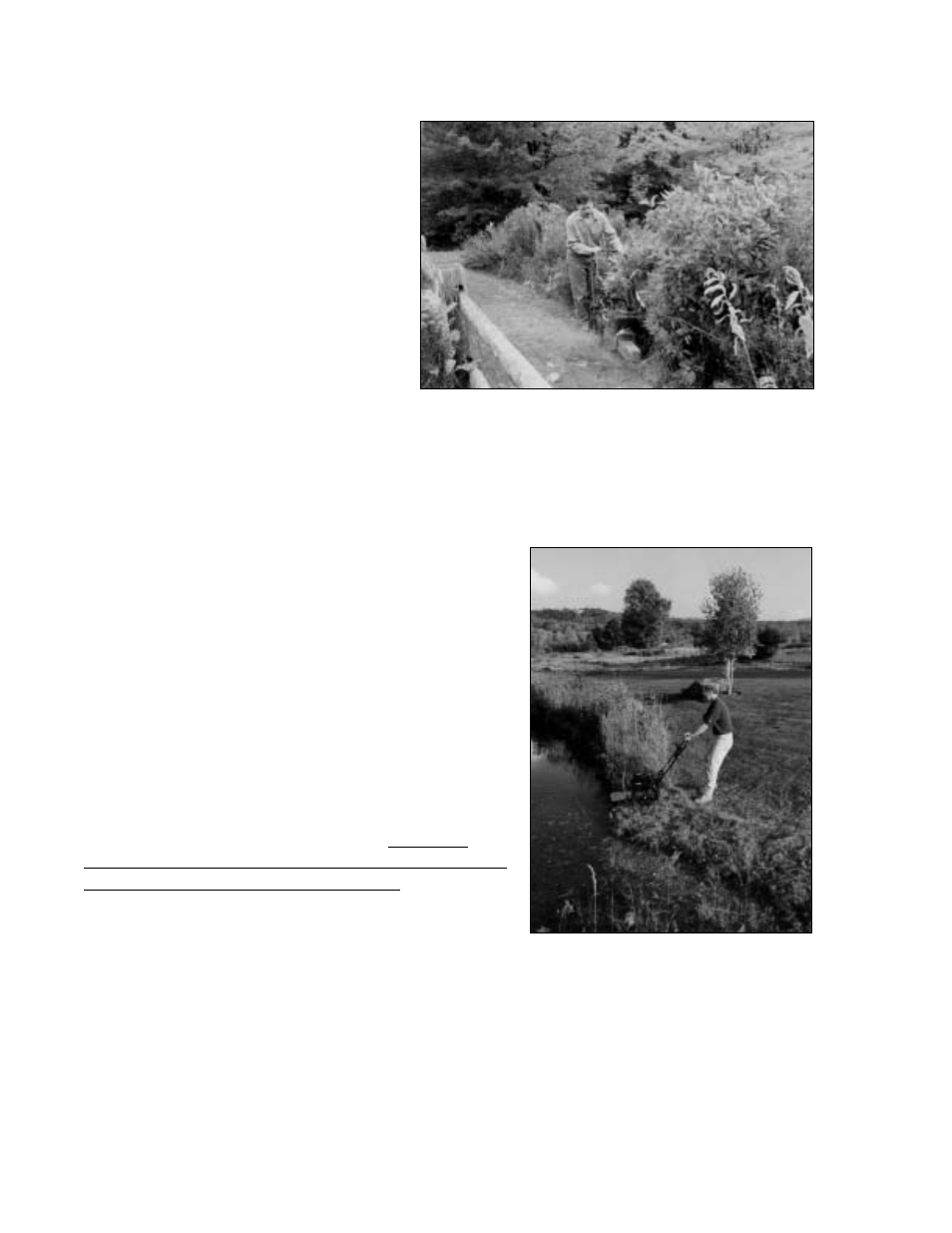Heavy growth, Wet conditions, Very dry conditions – DR Power Walk-Behind Pro (2000 - 2001) User Manual
Page 24: Slopes

DR
®
TRIMMER/MOWER
™
Assembly & Operating Instructions
18
Heavy Growth
Take your time in heavy growth. Be sure
to keep the uncut material to your left,
maintaining a clear discharge area to your
right (Figure 32). If the machine can't do
it all in one pass, overlap half of the
cutting swath. And if the grass is very
thick and heavy, try raising the trimmer
head off the ground a few inches by
pushing down on the handlebar. Cut the
material at this height, and then make a
second pass with the Mow-Ball
™
Support
on the ground.
EASE the DR
®
TRIMMER/MOWER
™
into denser growth. If the material is too
tough or woody and can't be cut, the cutting cords will wrap around it, wear down or even break
off.
Sometimes, growth is so heavy that it can't be mowed in rows. A back and forth "vacuum
cleaner" motion often works better when tackling really tough material.
Wet Conditions
Because there is no housing to restrict the flow of cut
material, you can also use your DR
®
TRIMMER/MOWER
™
to mow wet or heavy growth.
The DR
®
can be used in damp conditions—after a rain or
in the early morning dew—without clogging or stalling.
You can also mow wet areas such as ditches and around
ponds (Figure 33).
Very Dry Conditions
When trimming and mowing in very dry conditions, be
extra cautious of cut grass, chaff, weeds, seeds, etc.,
accumulating on the engine, especially around the recoil-
starter housing and engine cooling fins. Frequently
remove debris from the recoil guard on top of the engine
to prevent overheating and engine damage.
Please see the engine manufacturer's owner's manual for
more detailed information on cleaning the air intake and
cooling system on the engine.
Slopes
You can trim and mow on slopes up to 20 degrees. Continuous use on slopes steeper than 20
degrees may deprive the engine of adequate lubrication, and damage components.
Figure 32
Figure 33
